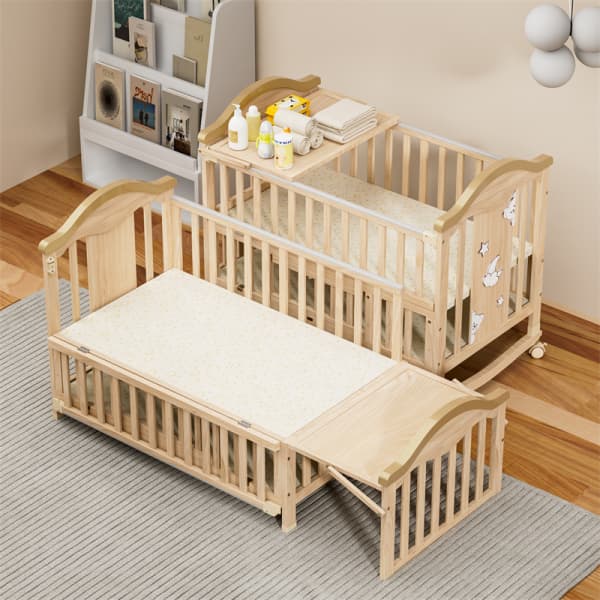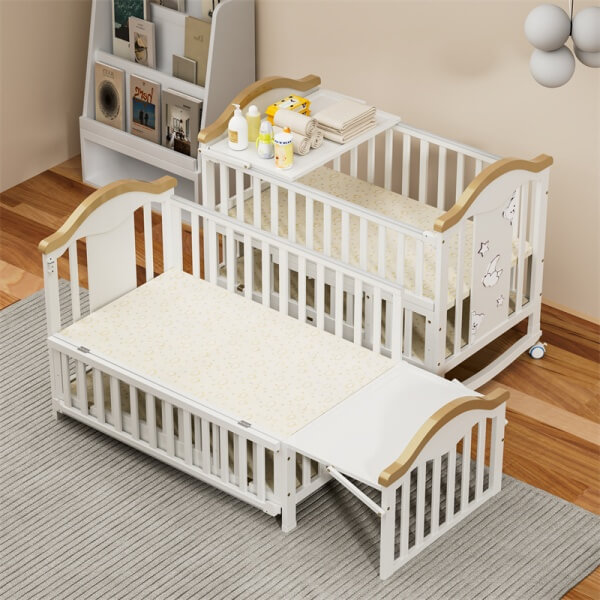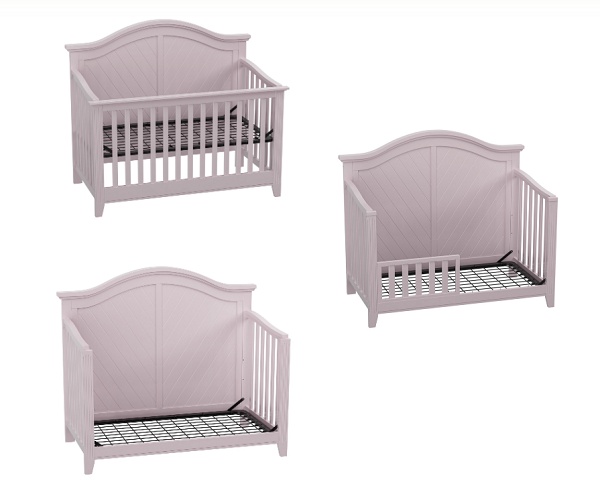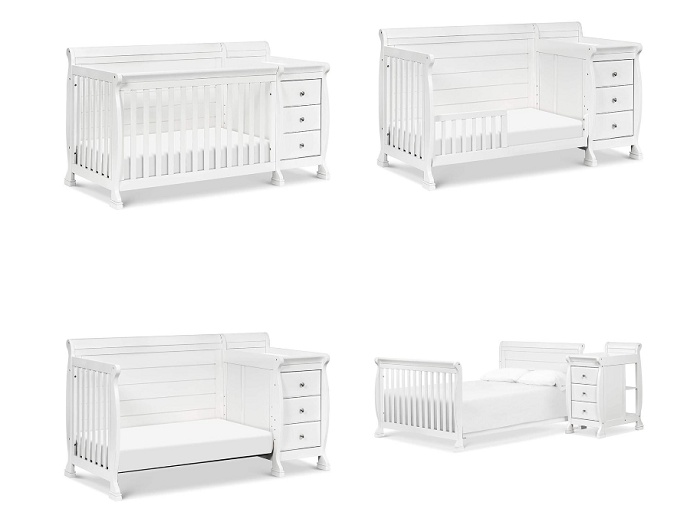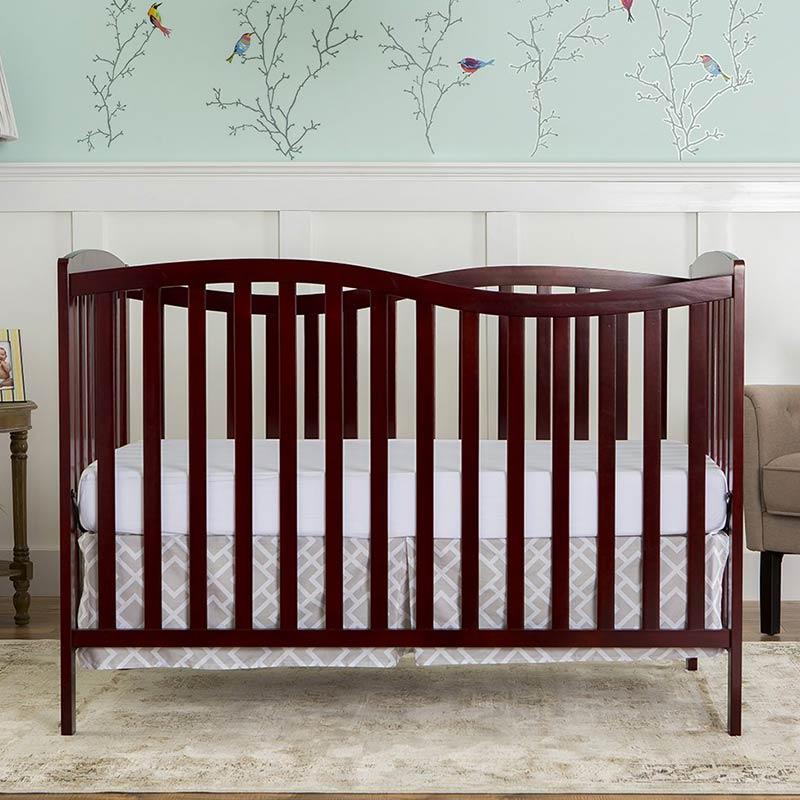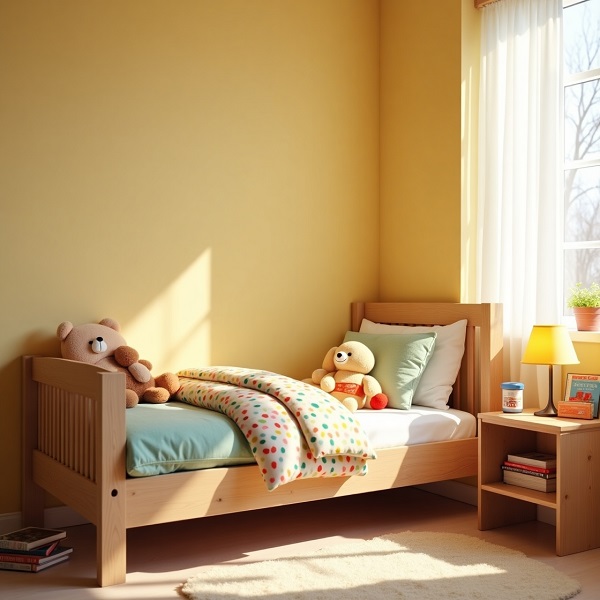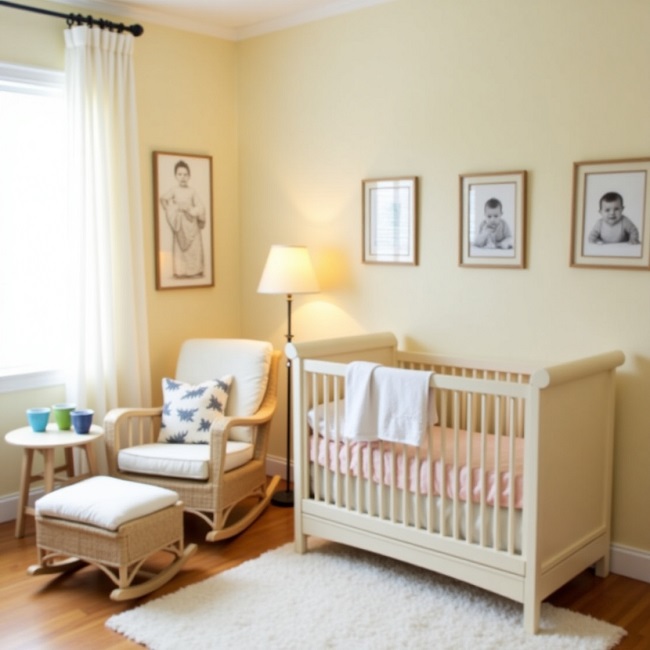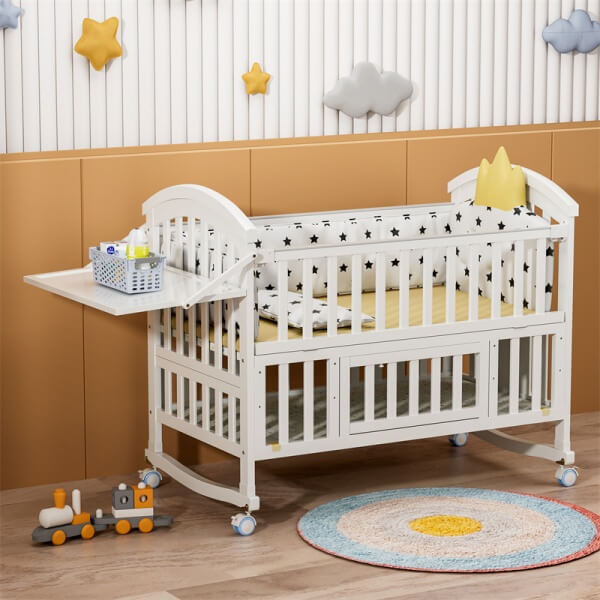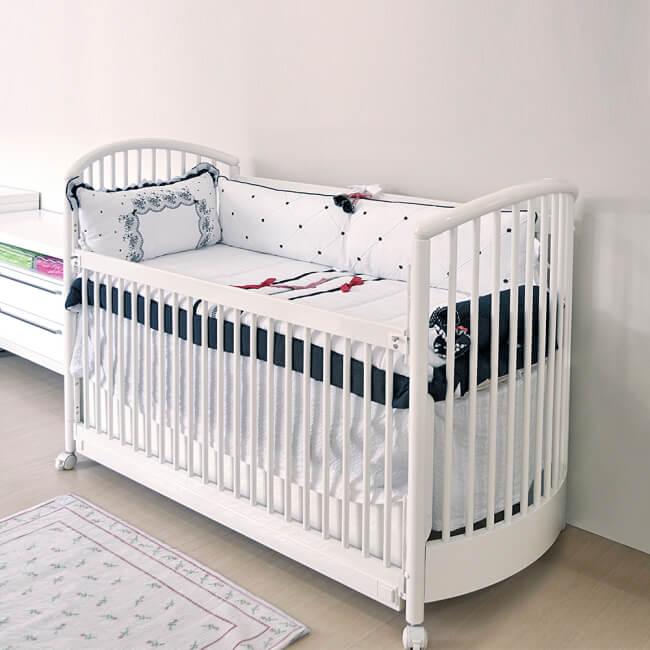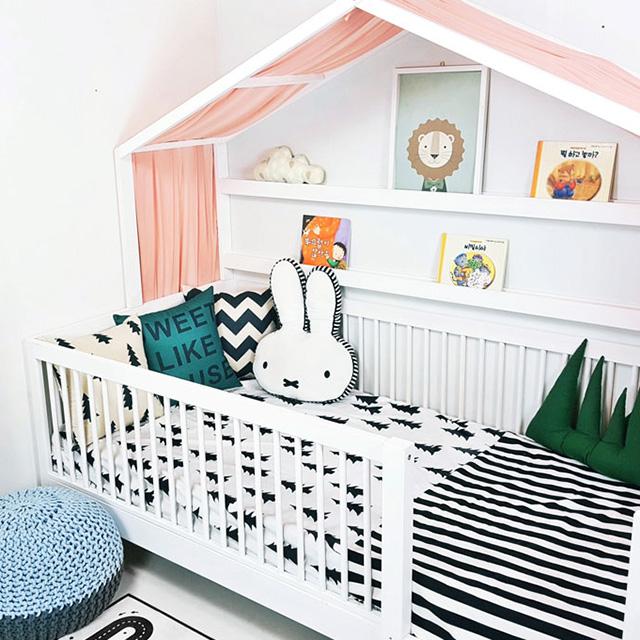Among the dazzling array of baby products, the choice of cribs often makes parents feel entangled: they must meet the safety needs of newborns and adapt to the rapid growth of children. If you are looking for a crib, you must have noticed the convertible crib product.
Traditional cribs are often unused after the child is 2 years old, while convertible cribs extend their service life to the teenage stage through modular design. In addition, it is promise to save parents time, money, and closet space.
According to a survey by Consumer Reports, 78% of parents believe that a convertible design significantly improves the long-term use value of furniture. Convertible cribs avoid the tediousness and expense of repeatedly purchasing toddler beds and single beds.
But what exactly makes these cribs different, and are they worth the investment? This guide explores the world of convertible cribs, breaking down their features and benefits.
What Is a 2 in 1 Crib?
Two Modes:
- 1. Standard crib (0-2 years old)
- 2. Toddler bed (2-4 years old)
In its initial configuration, a 2-in-1 crib functions the same as a traditional crib, with high safety guardrails, a fixed bed frame, and a mattress that usually has multiple adjustable height settings. This mode is suitable for infants from newborn to about 2-3 years old.
The highest level of the bed board (about 26 inches from the top of the guardrail) is suitable for the newborn stage. As the child’s motor skills develop, it is lowered to the lowest level in three steps to prevent the child from climbing and falling.
As the baby grows and becomes more active (such as climbing or trying to escape the crib), the crib will gradually transform into a design suitable for toddlers.
To convert the mode to a toddler bed, simply remove one side of the guardrail and install a toddler guardrail (if included in the model or purchased separately). The original four-sided closed crib will become a combination of three-sided guardrails + a low fence when converted.
What Is a 3 in 1 Crib?
Three Modes:
- 1. Standard crib (0-2 years old)
- 2. Toddler bed (2-4 years old)
- 3. Daybed (5-10 years old)
The 3-in-1 crib is designed to accommodate different stages of a child’s development through three different configurations. It usually starts as a standard crib, then converts to a toddler bed, and finally becomes a sofa bed. It serves one more growth stage than the 2-in-1 product.
Parents use the initial configuration of the crib to arrange their baby for sleep. After the child’s mobility increases, the guardrails are removed to allow the child to get in and out of the bed freely and enjoy the toddler bed mode.
In many 3-in-1 crib models, the final configuration is a daybed. When the child enters the preschool stage, parents can remove the side guardrails and convert the bed frame into a low bed similar to a sofa.
This form is particularly suitable for daytime naps, reading, or games – imagine a “safety island” with enclosures on three sides and a height of only an adult’s knees, where children can climb up and play by themselves without parents worrying about the risk of falling.
What Is a 4 in 1 Crib?
Three Modes:
- 1. Standard crib (0-2 years old)
- 2. Toddler bed (2-4 years old)
- 3. Daybed (5-10 years old)
- 4. Full-Size Bed (over 5 years old)
The 4-in-1 crib is the most versatile convertible crib on the market and a true “lifelong growth piece of furniture” that can accompany your child from birth to adolescence. It is designed to adapt to the four key stages of a child’s growth: from a crib to a toddler bed, to a sofa bed, and finally to a full-size bed.
When your child has grown through the infant and toddler stages, use the conversion kit to convert the crib into a full-size bed. The front and back boards of the crib are usually used as the headboard and footboard of the bed. The originally compact crib can “grow fatter” by 30-40 cm and eventually become the same size as an ordinary single bed (about 190×90 cm).
Some designs even allow the decorative columns of the original bed to be retained, so that the grown-up child can still retain the memory elements of the baby period.
The 4-in-1 crib can accompany your child for more than ten years. For parents, only one purchase can replace four separate pieces of furniture. Although the initial cost may be higher than a standard crib, it can save the trouble of subsequent purchases and save storage space.
Please note that the conversion kit and the larger mattress for the full-size bed stage are usually not included in the original purchase price.
Benefits of Using a Convertible Crib
Long-Term Cost Efficiency
While the initial price of a convertible crib may be higher than a standard model, its ability to adapt to a child’s growth stages translates to significant savings over time, particularly for households with multiple children. Families avoid the recurring expense of purchasing separate toddler beds, daybeds, or full-size frames.
Sustainable Choice
Traditional nursery furniture often ends up discarded after a few years, contributing to landfills. Convertible cribs, however, are designed for longevity. By serving multiple purposes over many years, they minimize the need for replacements.
Safety Consistency
High-quality convertible cribs are rigorously tested to meet safety standards at every stage, from infancy through adolescence. Reputable manufacturers ensure that conversion kits and components maintain structural integrity, reducing risks associated with uneven frames or unstable joints.
How to Convert a Convertible Crib?
Is converting a crib as complicated as assembling furniture? But once you understand the core logic, it’s actually easier than installing a sunshade on a stroller. The key is to understand that “conversion is not transformation, but restoration of design.” Before you take action, you must do 3 things:
1. Find the original manual.
2. Check all accessory packages (focus on checking the L-shaped metal connector and transition fence).
3. Prepare tools: Allen wrench (comes with most brands), rubber hammer, level.
4. Understand your crib type
- Two-in-one: only need to deal with the removal of the guardrail and the lowering of the bed.
- Three-in-one: involves guardrail modification + sofa bed support frame installation.
- Four-in-one: requires expanding the bed frame size and replacing the connector.
Transitioning from Crib to Toddler Bed
1. Lower the bed board: Find the adjustment hole on the inside of the bed, loosen the buckle, and lower the bed board to the lowest level (usually about 20cm from the floor).
2. Remove the guardrail: Remove the screws of the long side guardrail on one side, insert 1 short fence into the reserved slide slot, and lock the safety bolt after hearing a “click”.
⚠️ Key checkpoint: When shaking the bed frame vigorously, the displacement of the transition fence must not exceed 3mm.
Adapting to a Daybed
1. Expand space: If the bed can be extended, first pull open the telescopic rods on both sides.
2. Change the structure: Remove the remaining short side guardrails on both sides and install the U-shaped support frame.
3. Place the bed against the wall to increase stability.
Converting to a Full-Size Bed
1. Assemble the extension frame: Remove the head and foot boards of the bed, and insert the reserved crossbeam into the hawk-joint holes at the head and foot of the bed.
2. Replace the connector: Replace the original short screws with extended screws.
3. Calibrate the level: Use a level to adjust the height difference of the four legs.
4. Replace the crib mattress with a full-size mattress and make sure it fits tightly against the bed frame.
Safety Precautions
Avoid makeshifts: Never use unapproved conversion kits or replacement parts as this will affect stability.
Regular inspections: Regularly check for loose screws, wood splinters, or worn parts, especially after conversion.
Mattress size: The gap between the mattress and the bed frame should not exceed two fingers wide to prevent the risk of pinching.
Post-conversion Safety Acceptance Checklist
✅ No abnormal sound when shaking vigorously
✅ The four sides of the mattress fit tightly against the guardrail (credit cards should not slide when inserted)
✅ The distance from the top of the transition fence to the mattress ≥ the chest height of the child when standing
✅ All screw holes are covered (to prevent clothing from being hooked)
Convertible Crib Vs Toddler Bed
When babies start trying to climb over the crib rails, European and American families often face a classic dilemma: should they invest in a convertible crib or directly purchase a toddler bed?
| Dimensions | Convertible Crib | Toddler Bed |
| Structure and Design | Modular design that evolves with the child. | A standalone, low-to-the-ground bed designed for toddlers. |
| Age and Size Suitability | Suitable from infancy through early childhood or adolescence, depending on the transition option. | For children transitioning out of a crib. |
| Space Requirements | Larger footprint, especially when converted to twin/full sizes. | Compact, fitting smaller spaces. |
| Longevity and Sustainability | Long-term use reduces waste and cost. | less sustainable but offers flexibility. |
Conclusion
Convertible cribs are not a simple marketing concept, but a growth solution that has been precisely engineered. When you choose your child’s first bed, you are actually investing in an important life scenario that will accompany them through their toddler years, literacy, and adolescence.
Remember: a high-quality convertible bed must have ASTM F1169 safety certification, a traceable list of conversion accessories, and a warranty of at least 10 years – these are the golden triangle that truly measures “cost-effectiveness”.
Recommended Related Articles:

